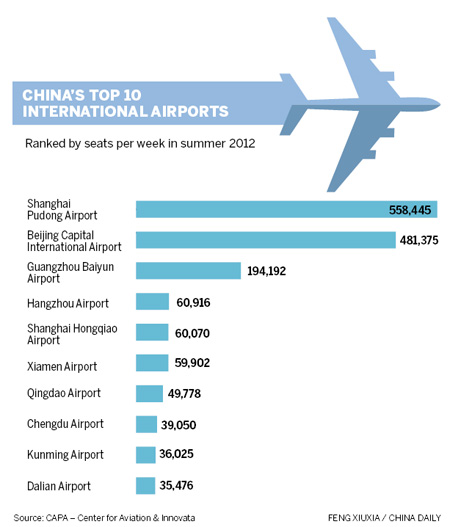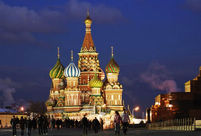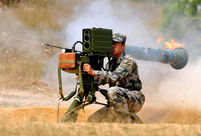 Shocking moments when PLA's weapons open fire
Shocking moments when PLA's weapons open fire Famous Lanzhou beef noodles
Famous Lanzhou beef noodles Armed Police hold anti-terrorism drill in SE China's Xiamen
Armed Police hold anti-terrorism drill in SE China's Xiamen Harbin Int'l Ice and Snow Festival opens
Harbin Int'l Ice and Snow Festival opens 'Jin' named the word of the year by cross-strait netizens
'Jin' named the word of the year by cross-strait netizens Chinese scientific expedition goes to build new Antarctica station
Chinese scientific expedition goes to build new Antarctica station
 Chinese naval escort fleet conducts replenishment in Indian Ocean
Chinese naval escort fleet conducts replenishment in Indian Ocean 17th joint patrol of Mekong River to start
17th joint patrol of Mekong River to start China's moon rover, lander photograph each other
China's moon rover, lander photograph each other |
At the Zhengzhou international airport in the capital of Henan province, a city most recognized in the West as a production center for Apple products, growth in passenger rates is almost double the national average, hitting 13 percent in 2012.
"It is definitively an asset to have direct flights into second-tier cities with a strong demand. It makes our global network even stronger," Christen of Lufthansa says. "It allows the passenger to fly directly to and from Europe without having to change aircraft."
Despite an eagerness to explore the untapped potential of China's more remote regions, many airlines are expressing caution about starting new routes.
Establishing a flight to a new city is a multi-million-dollar gamble. A standard route operating with a Boeing 767, which can carry 220 passengers, can cost an airline up to $50 million per year to operate, requiring more than 120,000 passengers per year to break even.
That price tag is slightly lower for international carriers traveling to second-tier cities, with many local governments offering subsidies to airlines to establish international routes to help bring investment and tourism to the city.
In 2012, more than 600 million yuan ($99 million) in subsidies were offered by 18 Chinese cities to airlines willing to establish international routes.
And while subsidies may offer a head start for a new flight path, when the funding stops, airlines are occasionally left with a tough decision — fold the flight or risk running into the red.
This was the choice Air France faced early last year. After running its Paris-Wuhan, Hubei province, route for two years, the carrier decided to reduce its frequency from three times a week to two, after considering canceling the flight altogether.
According to one French newspaper, Air France was being offered about 30,000 euros per flight by the local government to the capital of Central China's Hubei province.
Although many airlines are eager to expand, China's current air regulations and infrastructure are already feeling the strain. Beijing Capital International Airport, which opened its third terminal in 2008 for the Beijing Olympics, is the second-busiest airport in the world, handling 82 million passengers per year. The busiest, Hartsfield-Jackson International Airport in Atlanta, Georgia, sees 95 million passengers annually.
Shanghai Pudong and Hongqiao airports are not far behind, handling a combined 80 million passengers last year, according to reports from the Center for Asia-Pacific Aviation.
Guangzhou Baiyun International Airport expects to handle 52 million passengers this year, compared with just 20 million when the airport opened in 2004.
Combined, these three cities account for 31 percent of the total air traffic in China.
While airports and airlines generally welcome high passenger numbers, coordinating such traffic often comes with a host of problems, largely resulting in unexpected flight delays.


 In photos: Ten 'tuhao' devices in 2013
In photos: Ten 'tuhao' devices in 2013 College students saved from an ice hole by brave citizens
College students saved from an ice hole by brave citizens Gallery: Top 10 box office hits in 2013
Gallery: Top 10 box office hits in 2013 Beautiful churches around the world
Beautiful churches around the world Yang Mi, Hawick Lau hold wedding in Bali
Yang Mi, Hawick Lau hold wedding in Bali 'Phubbing' people seen everywhere
'Phubbing' people seen everywhere World's biggest snack shop in China
World's biggest snack shop in China Shocking moments when PLA's weapons open fire
Shocking moments when PLA's weapons open fire World's fastest train CRH380A assembled in E China
World's fastest train CRH380A assembled in E China Top 10 box office hits in 2013
Top 10 box office hits in 2013 In photos: Ten 'tuhao' devices in 2013
In photos: Ten 'tuhao' devices in 2013 Real estate tycoon measures PM2.5
Real estate tycoon measures PM2.5  'I am on a journey to lose weight'
'I am on a journey to lose weight' 'Cute' artifacts exhibited in Nanjing Museum
'Cute' artifacts exhibited in Nanjing Museum Advanced Chinese weapons that stepped into spotlight in 2013
Advanced Chinese weapons that stepped into spotlight in 2013Day|Week|Month